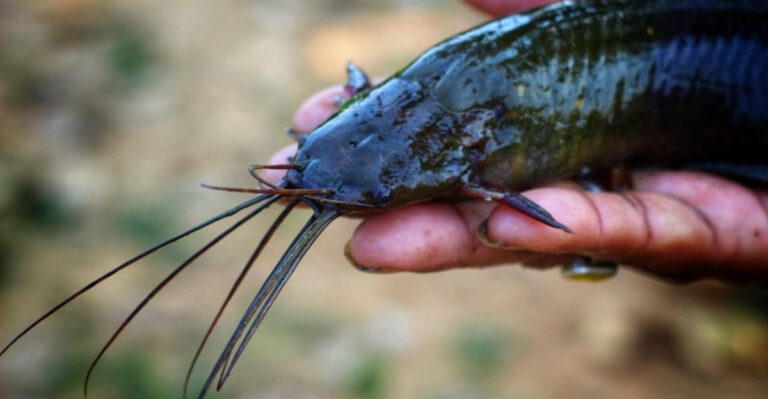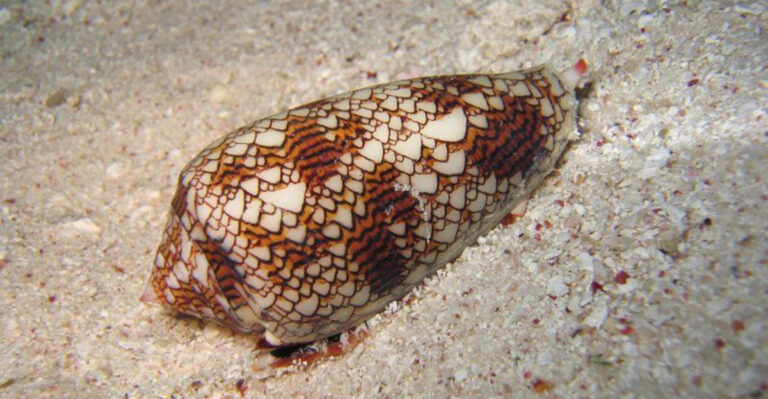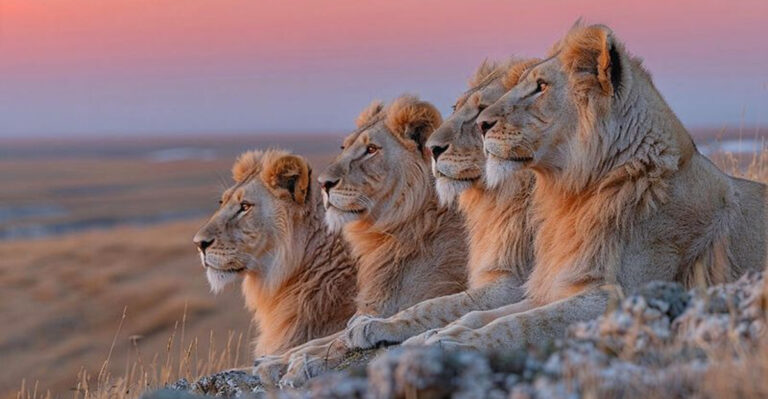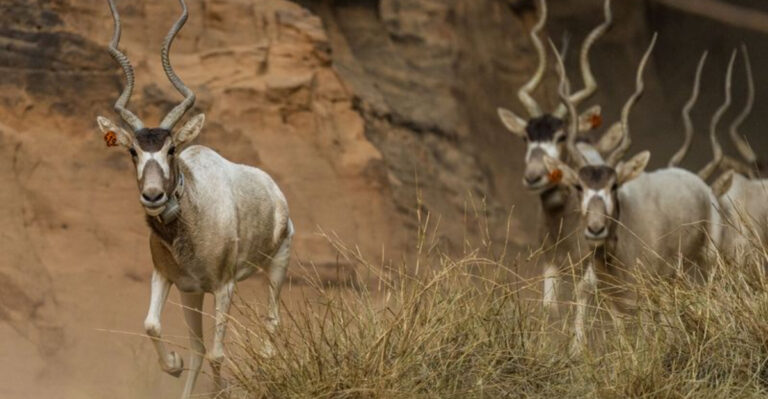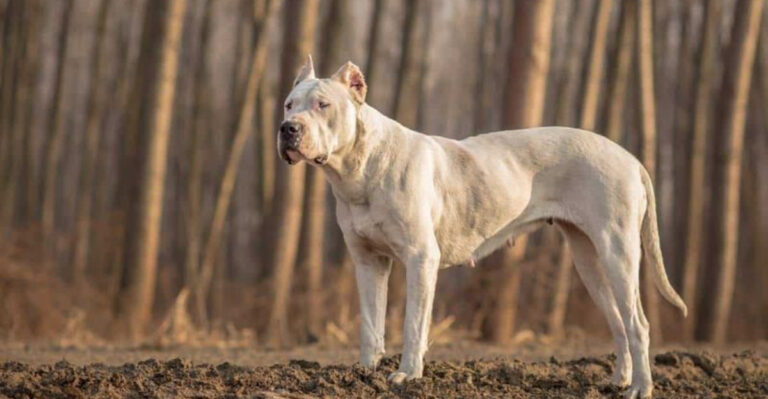18 Big Cats You Might Never See Again – A Look At The Rarest Species
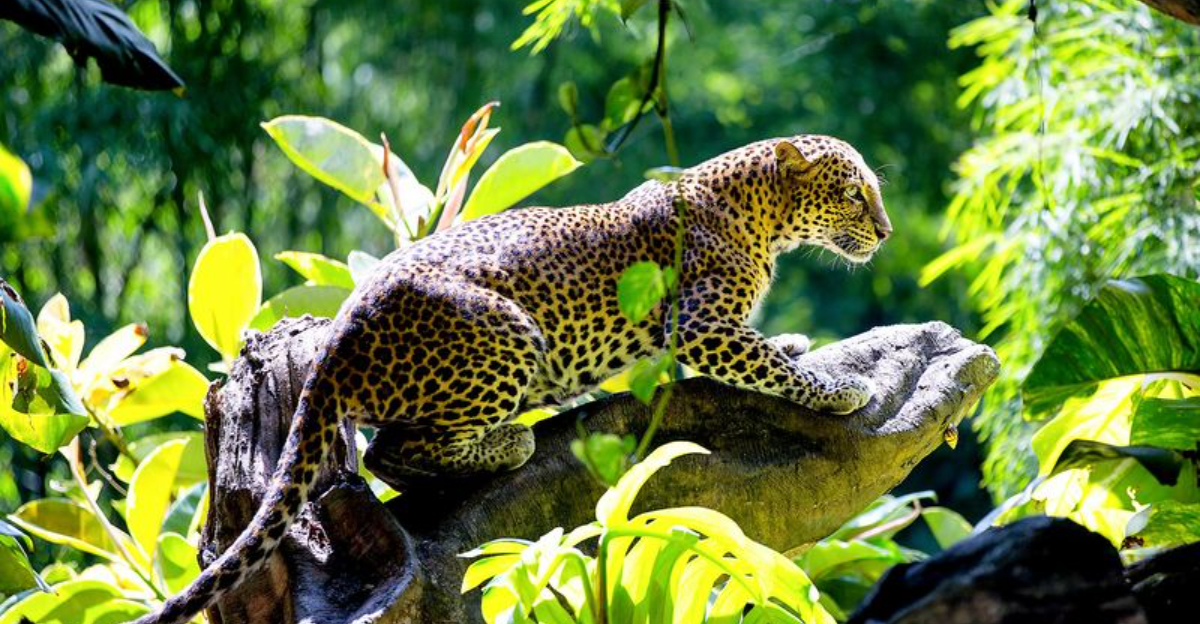
As the sun sets over the vast wilderness, the shadows of majestic big cats grow longer, hinting at a future where these beautiful creatures might only exist in the whispers of the wind.
Journey with us through the alluring world of enigmatic big cats, whose elusive presence and dwindling numbers demand our attention and admiration.
From the snow-capped peaks to dense tropical forests, each of these regal felines carries with it a story of survival, wonder, and the urgent call for conservation. Embark on this adventure with passion, discovering the secrets of the world’s rarest big cats, each a testament to nature’s splendor and fragility.
1. Amur Leopard
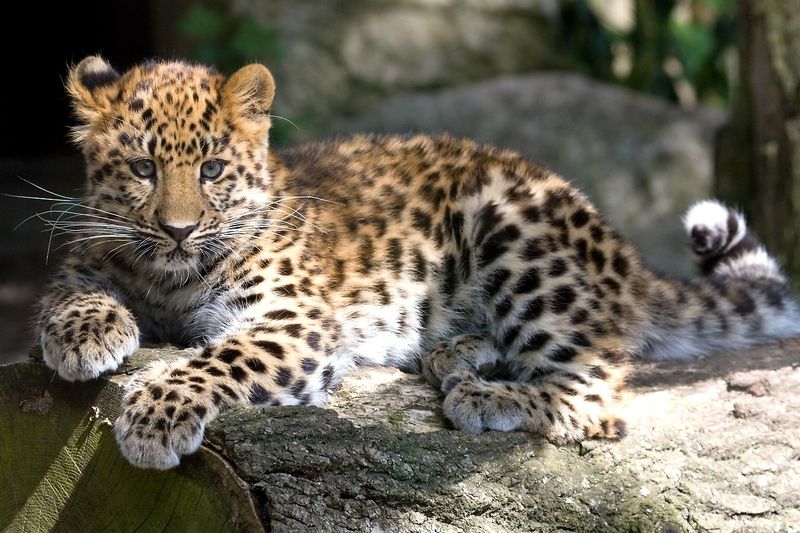
In the icy embrace of the Russian Far East, a ghost prowls with silent grace—the Amur Leopard. This spectral feline, with its striking rosette-patterned coat, is the epitome of rarity. Step into its world, where survival is a constant battle against dwindling numbers and harsh winters.
The Amur Leopard’s piercing gaze cuts through the morning mist, a symbol of nature’s resilience. Yet, its future remains uncertain, threatened by habitat loss and poaching.
Conservationists labor tirelessly to ensure this magnificent creature does not vanish into legend. Their efforts remind us that every action counts in preserving the delicate balance of our ecosystem. Catch a glimpse of this elusive cat, and be inspired to act.
2. Iberian Lynx
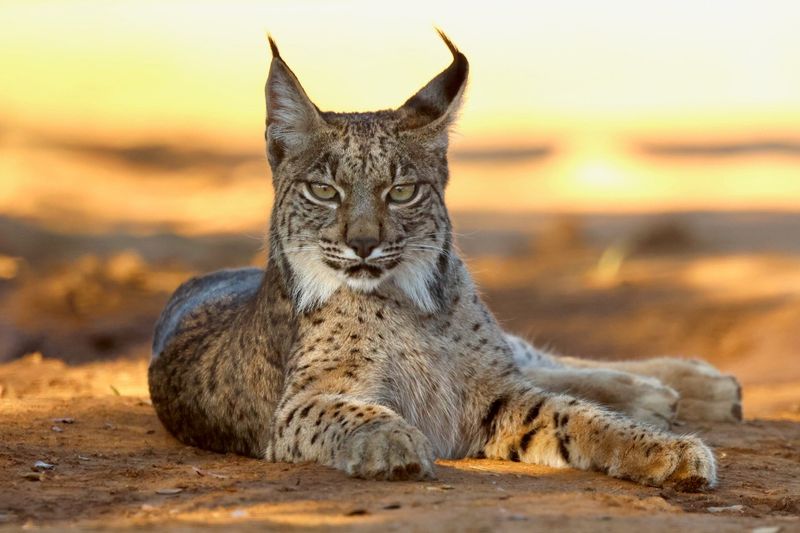
Hidden in the Mediterranean scrublands of Spain, the Iberian Lynx moves with stealth and precision. Its tufted ears and distinctive spotted coat blend seamlessly with the landscape, making this feline both elusive and enchanting.
The Iberian Lynx is not just a symbol of beauty; it is a beacon of hope for species recovery. Once on the brink of extinction, conservation efforts have seen its numbers slowly rise.
Witnessing the Iberian Lynx in its natural habitat is a privilege few experience. It serves as a reminder of what can be achieved with dedication and perseverance—a living testament to the possibility of change.
3. Sumatran Tiger
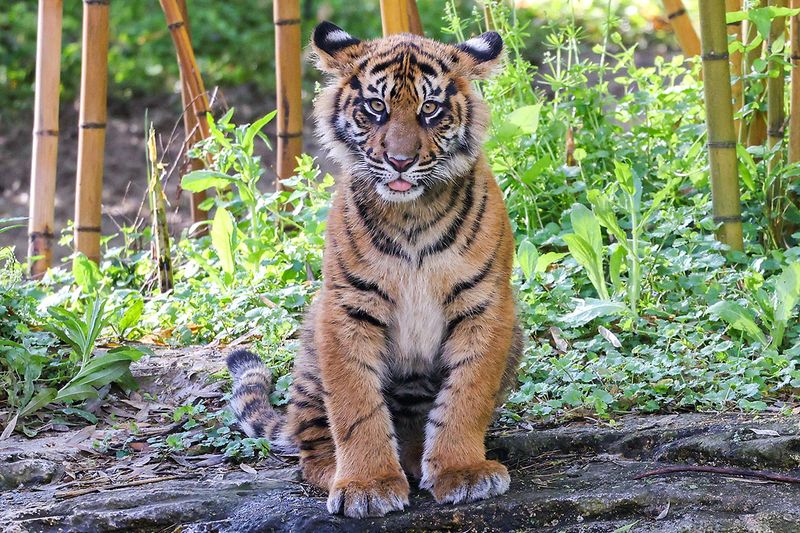
Amidst the dense tropical forests of Sumatra, a tiger emerges—fierce and captivating. The Sumatran Tiger, with its deep orange coat and bold black stripes, commands attention and respect.
This magnificent feline faces a perilous existence, battling against deforestation and poaching. Yet, it stands as a symbol of untamed beauty and strength.
To see a Sumatran Tiger is to witness the raw power of nature. Conservationists are working against the clock to save this species from extinction, urging us all to join the fight for its survival. In the eyes of the tiger lies a fierce determination—a call to action for us all.
4. Snow Leopard
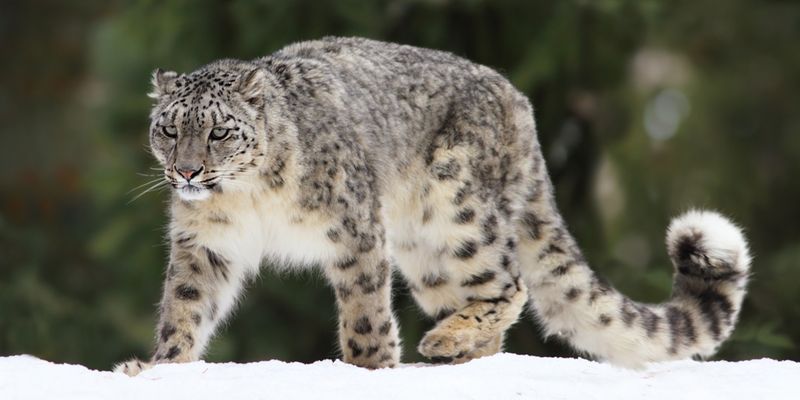
High in the Himalayas, where the air is thin and the cliffs steep, the Snow Leopard reigns supreme. Shrouded in mystery, this elusive cat is a master of camouflage, blending perfectly with its rocky, snow-covered habitat.
The Snow Leopard’s presence is a testament to the resilience of life in extreme conditions. Yet, it faces threats from poaching and habitat disruption.
To protect the Snow Leopard is to preserve the untamed spirit of the mountains. Conservation efforts strive to secure a future for these spectral predators, ensuring they remain more than just whispers in the snow. Their survival is a legacy we must uphold.
5. Javan Leopard
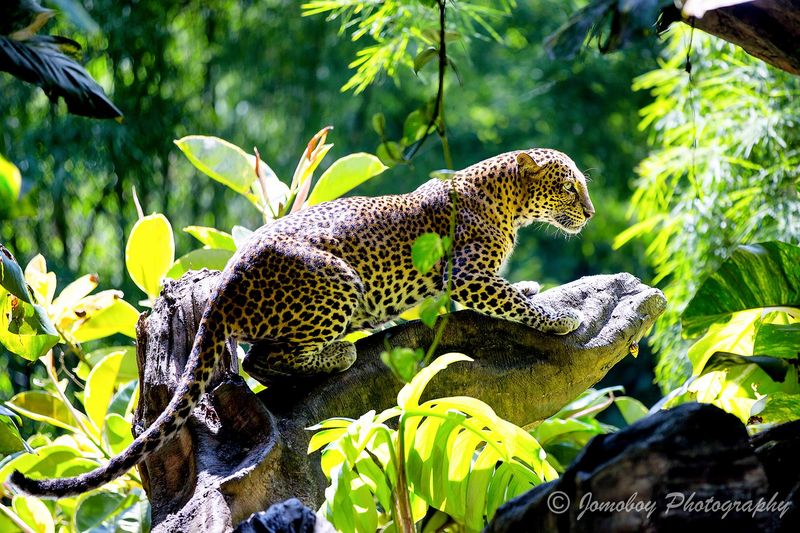
In the lush rainforests of Java, a solitary figure moves with unmatched elegance—the Javan Leopard. Its golden-spotted coat shimmers through the foliage, a rare jewel in a sea of green.
The Javan Leopard’s existence is precarious, threatened by habitat loss and human encroachment. It stands as a reminder of the fragile beauty of our natural world.
Efforts to conserve the Javan Leopard focus on safeguarding its habitat and fostering coexistence with local communities. As guardians of this precious cat, we hold the key to its future. Our actions today will shape the legacy of these magnificent creatures for generations to come.
6. Bornean Clouded Leopard
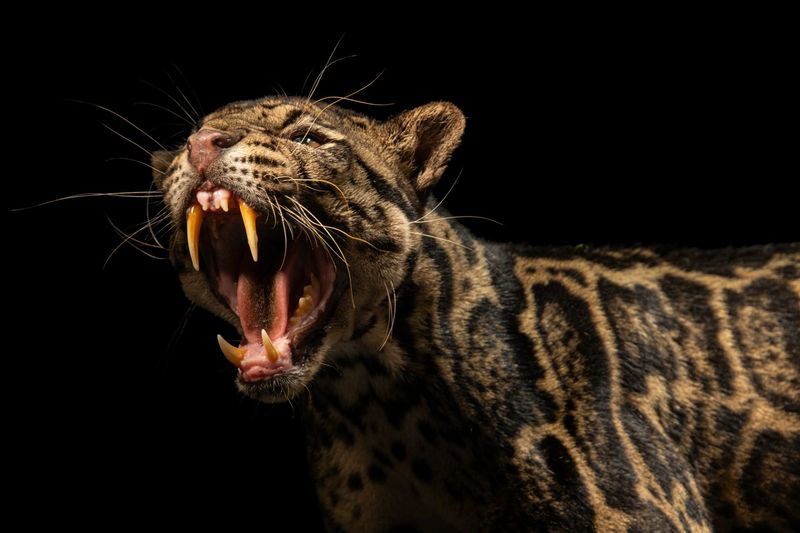
Deep within the rainforests of Borneo, a shadow glides through the canopy—the Bornean Clouded Leopard. Named for its unique cloud-shaped spots, this feline is a true arboreal phantom.
Its existence in the wild is shrouded in mystery, as the leopard is rarely seen by human eyes. Yet, it plays a crucial role in the ecosystem, maintaining the balance of life in the treetops.
Conservationists are unlocking the secrets of this enigmatic cat to ensure its future in the wild. Protecting the Bornean Clouded Leopard means preserving the intricate tapestry of life in Borneo’s rainforests. Each step taken is a stride towards hope.
7. Andean Mountain Cat
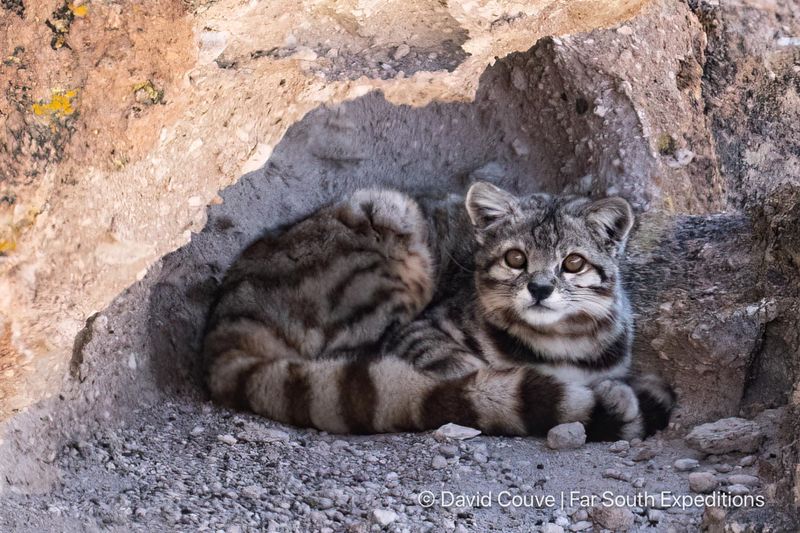
In the rugged terrain of the Andes, a small yet fierce predator roams—the Andean Mountain Cat. With its thick, plush fur and striking appearance, this cat is perfectly adapted to the harsh mountain climate.
The Andean Mountain Cat is exceedingly rare, with limited sightings making it one of the least understood felines in the world. It is both a creature of beauty and a symbol of the mysteries of nature.
Efforts to study and conserve the Andean Mountain Cat are vital, as its survival is intricately linked to the fragile Andean ecosystem. Protecting it is a commitment to preserving the diverse life found in these majestic mountains.
8. South China Tiger
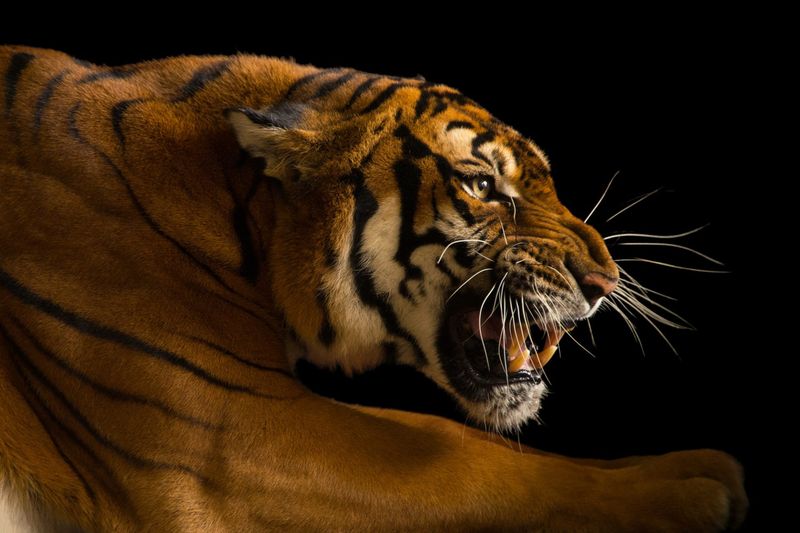
In the bamboo forests of China, a tiger moves with regal confidence—the South China Tiger. With its vibrant orange coat and striking black stripes, this tiger is a living masterpiece of the natural world.
Once abundant, the South China Tiger now teeters on the brink of extinction, a victim of habitat destruction and human conflict. Its story is a poignant reminder of the delicate balance between progress and preservation.
Conservationists are fighting to protect the South China Tiger’s remaining habitat and reintroduce captive-bred individuals into the wild. Their efforts symbolize a ray of hope in the face of adversity, urging us all to act before it’s too late.
9. Flat-headed Cat
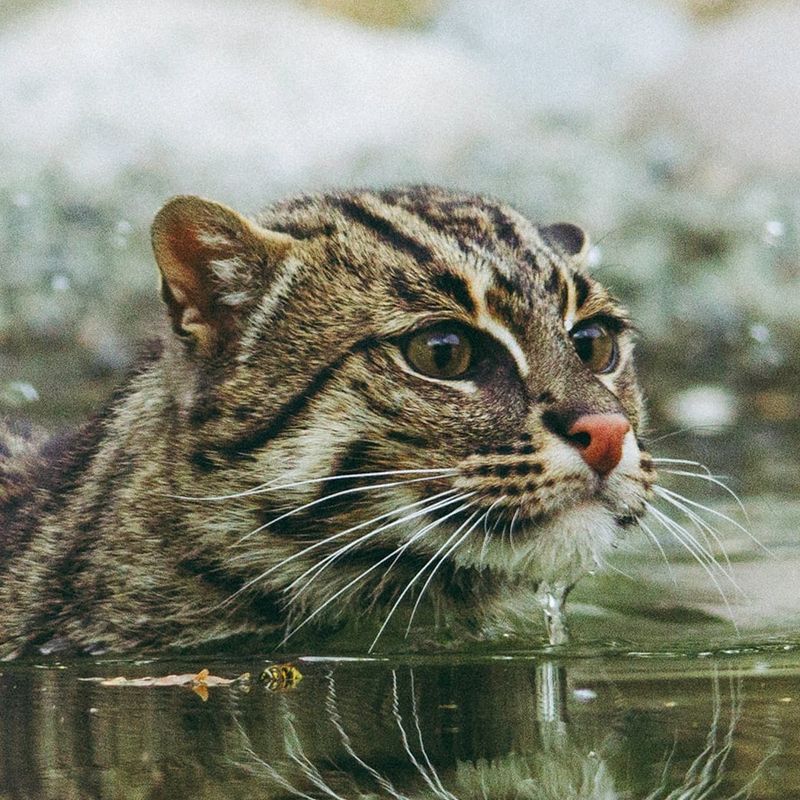
In the wetlands of Southeast Asia, a peculiar feline hunts with precision—the Flat-headed Cat. Named for its distinctive head shape, this cat is uniquely adapted to a life spent near water.
The Flat-headed Cat’s survival is intricately linked to the health of its wetland habitat, which is rapidly disappearing due to human expansion. It is both a rare gem and a crucial player in its ecosystem.
Conservation efforts focus on protecting the wetlands and ensuring a future for this extraordinary cat. By safeguarding its habitat, we protect a myriad of other species and preserve the natural wonders of our world. Join the fight for their survival.
10. Sand Cat
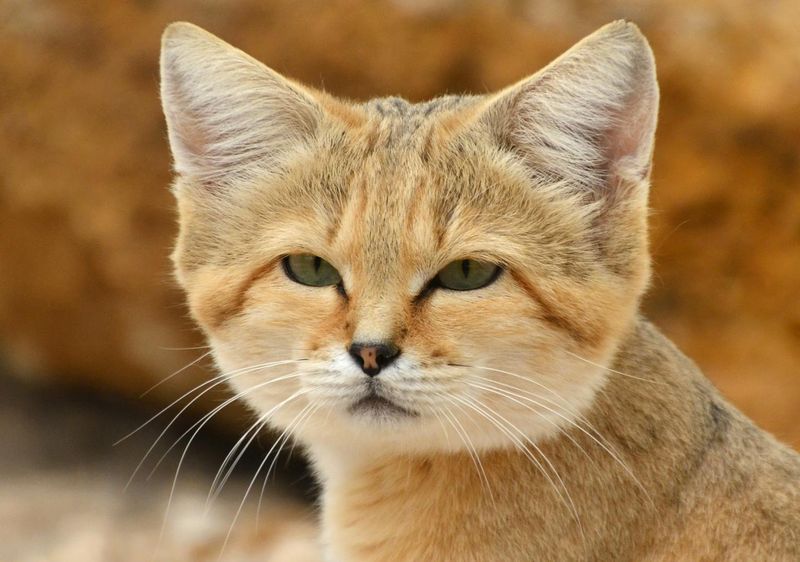
In the arid deserts of North Africa and the Middle East, a small predator thrives where few dare—the Sand Cat. Its sandy fur provides perfect camouflage against the harsh, sun-baked landscape.
The Sand Cat is a master of survival, enduring extreme temperatures and limited water. Yet, its existence is threatened by habitat loss and human activities.
Protecting the Sand Cat means preserving one of the most resilient creatures on the planet. Conservationists are working to ensure these desert specialists continue to prowl the dunes. Their survival is a testament to nature’s adaptability and the importance of maintaining our planet’s diverse habitats.
11. Fishing Cat
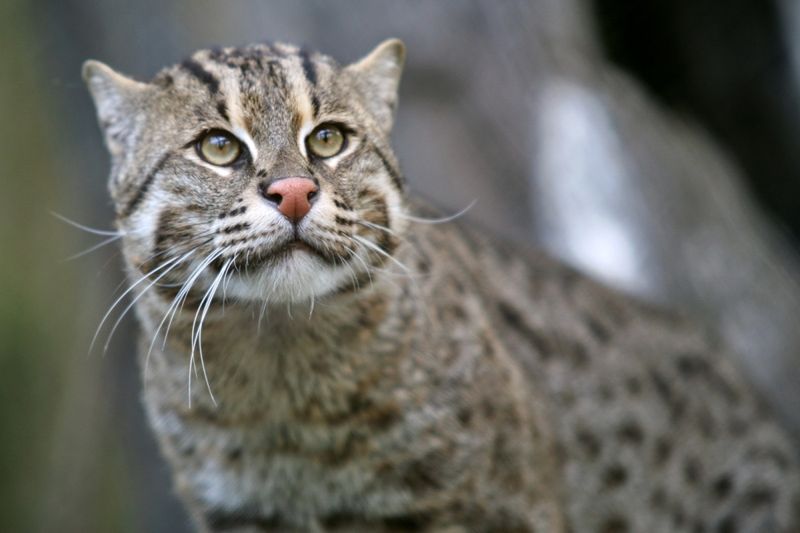
Stalking silently through the mangroves of South Asia, the Fishing Cat is a true aquatic hunter. With partially webbed feet and a keen eye for fish, it is perfectly adapted to its watery world.
The Fishing Cat is a vital part of the wetland ecosystem, yet its existence hangs in the balance due to habitat destruction. These cats are guardians of the mangrove forests, playing a crucial role in maintaining ecological health.
Conservationists strive to protect the remaining habitats of the Fishing Cat and educate communities on the importance of these wetland warriors. By ensuring their survival, we safeguard the rich biodiversity of the mangroves for future generations.
12. Margay
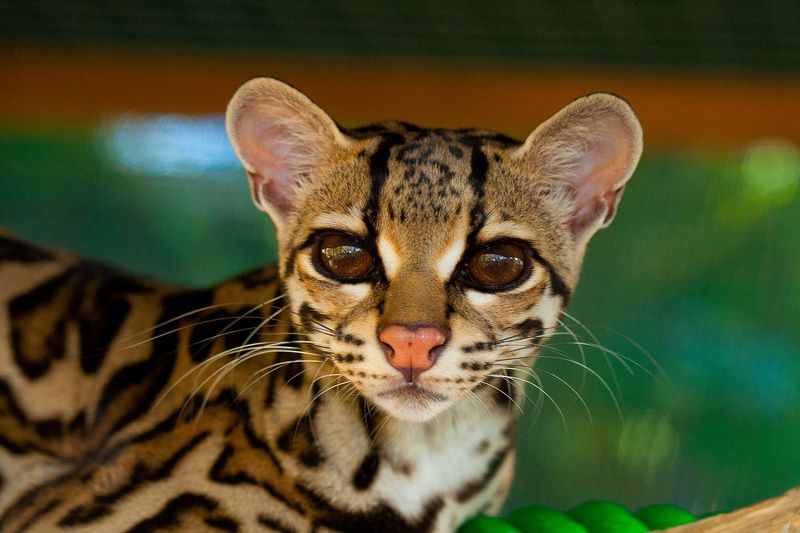
In the dense forests of Central and South America, the Margay moves with acrobatic grace. Known for its large, expressive eyes and long tail, this cat is a master climber, navigating the canopy with ease.
The Margay’s elusive nature means it is rarely seen, yet it plays a crucial role in its habitat. Its survival is threatened by deforestation and illegal wildlife trade.
Efforts to protect the Margay focus on preserving its forest home and combating illegal activities. By safeguarding this feline, we ensure the continued health of the vibrant ecosystems it inhabits. Every climb and leap is a step towards a brighter future.
13. Pampas Cat
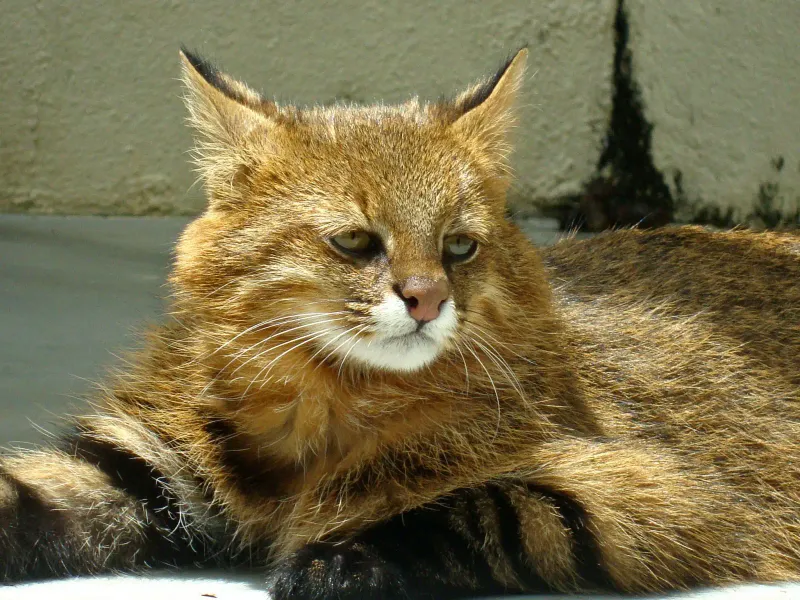
Across the grasslands of South America, the Pampas Cat roams with quiet confidence. With its varied coat patterns and colors, this feline is a master of disguise.
The Pampas Cat’s habitat is under threat from agricultural expansion, yet it remains a symbol of the wild beauty of the pampas. This small cat is a crucial part of its ecosystem, balancing the populations of smaller prey.
Conservation efforts aim to protect the Pampas Cat’s grassland home, ensuring its role in nature’s delicate balance. By valuing these unique habitats, we preserve the natural heritage of the region and its resilient inhabitants.
14. Black-footed Cat
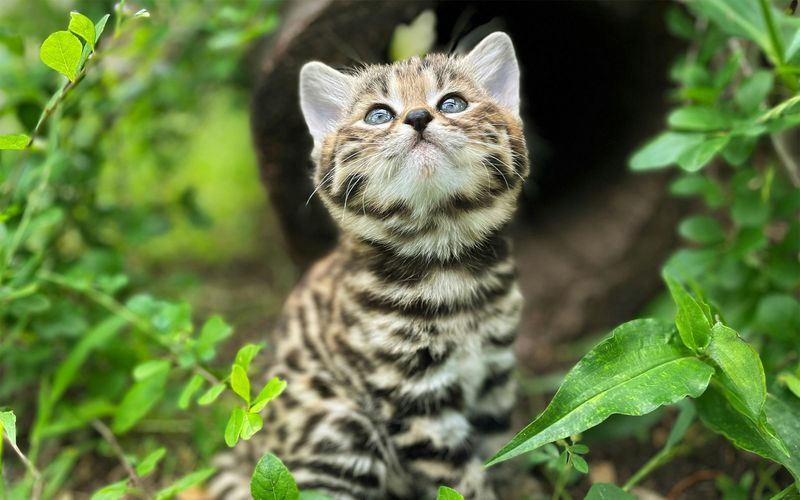
In the arid savannas of Southern Africa, a tiny feline prowls under the cover of night—the Black-footed Cat. Despite its small size, this cat is a formidable hunter, with a reputation for its tenacity.
The Black-footed Cat’s survival is threatened by habitat degradation, yet it embodies the fierce spirit of the African wild. It is a reminder that size does not determine impact.
Efforts to conserve the Black-footed Cat focus on habitat preservation and research into its behavior. By protecting this small predator, we honor the diversity of life found in Africa’s vast landscapes. Each step taken echoes the wild heart of the savanna.
15. Bay Cat
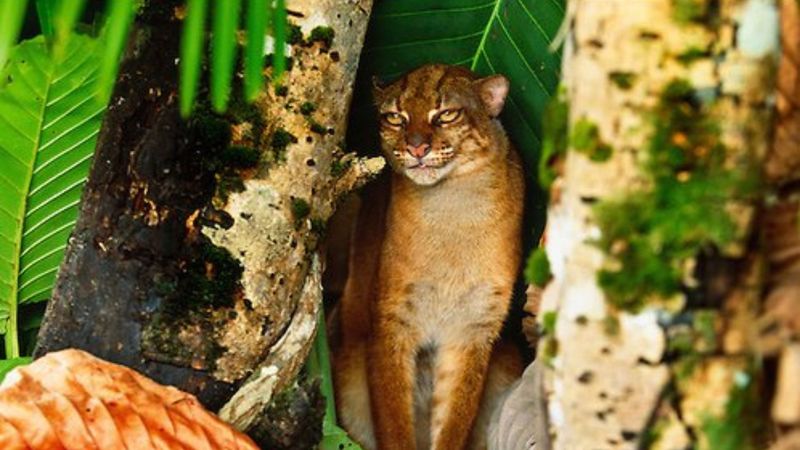
In the rainforests of Borneo, a rare and secretive feline walks the shadows—the Bay Cat. Its reddish-brown fur and elusive nature have made it a subject of intrigue and wonder.
The Bay Cat’s habitat is under constant threat from deforestation, pushing it to the brink of survival. This cat is a symbol of the urgent need for rainforest conservation.
Conservationists are racing against time to protect the Bay Cat’s dwindling habitat. By preserving the rainforests, we also protect countless other species that call it home. The Bay Cat’s survival is a call to awaken our commitment to the natural world.
16. Chinese Mountain Cat
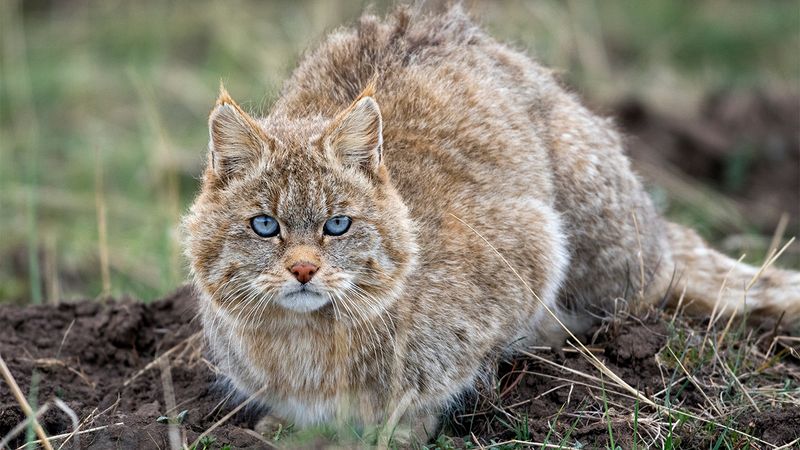
In the high-altitude steppes of China, a mysterious feline roams—the Chinese Mountain Cat. With its thick fur coat and piercing eyes, this cat is perfectly adapted to the cold winds of the plateau.
Little is known about the Chinese Mountain Cat, as its elusive nature makes it one of the least studied wildcats. It is a symbol of the unknown wonders that nature holds.
Conservation efforts focus on protecting the cat’s habitat from human encroachment and ensuring its continued presence in the wild. By uncovering the secrets of the Chinese Mountain Cat, we deepen our connection to the mysteries of the natural world.
17. Rusty-spotted Cat
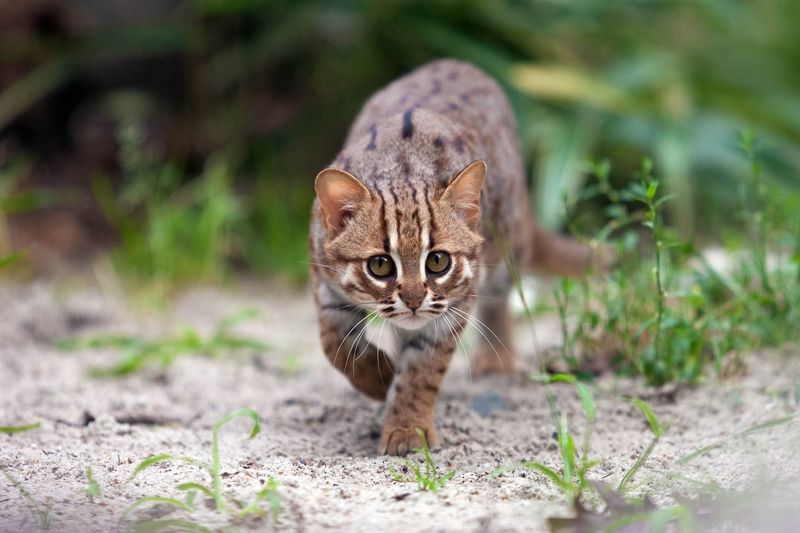
In the forests of Sri Lanka and India, the world’s smallest feline prowls—the Rusty-spotted Cat. Despite its diminutive size, this cat is a fierce predator, navigating the underbrush with agility and stealth.
The Rusty-spotted Cat’s habitat is increasingly threatened by deforestation, yet it remains a testament to the incredible diversity of the feline family. Its unique appearance and behaviors captivate all who encounter it.
Efforts to conserve the Rusty-spotted Cat focus on habitat preservation and raising awareness of its plight. By protecting these small cats, we celebrate the richness of biodiversity and the intricate web of life they represent.
18. Serval
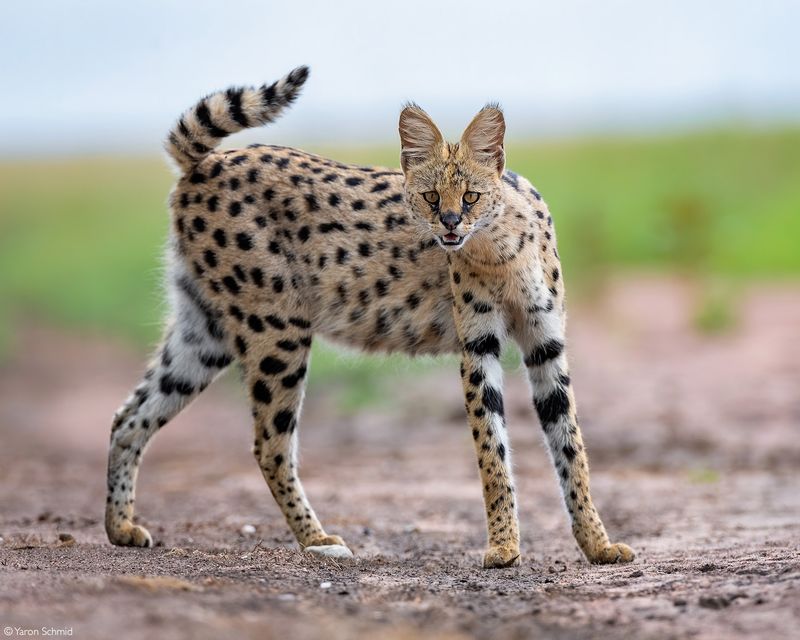
Across the African savanna, a cat with long legs and large ears moves with elegance—the Serval. Its spotted coat blends seamlessly with the tall grass, making it a masterful hunter.
The Serval is a symbol of the African wild, yet its survival is threatened by habitat loss and hunting. It plays a crucial role in controlling rodent populations, maintaining the ecological balance.
Conservation efforts aim to protect the Serval’s habitat and ensure its continued presence in the wild. By valuing this iconic species, we preserve the beauty and diversity of the savanna for future generations to cherish.

